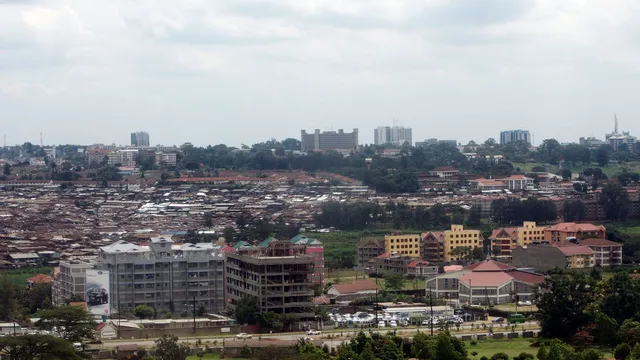
British national killed by vehicle in president's motorcade
2025-03-14 17:30- Edgar Charles Frederick, a 79-year-old British national, was killed after being struck by a vehicle in President William Ruto's motorcade.
- Witnesses reported the vehicle did not stop after the accident, leading to public outrage and calls for stricter traffic regulations.
- An investigation has been launched by Kenya's National Police Service to clarify the circumstances surrounding the incident.
Express your sentiment!
Insights
On Thursday, March 13, 2025, Edgar Charles Frederick, a 79-year-old British national, was struck by a government vehicle that was part of Kenyan President William Ruto's motorcade in Nairobi. At the time of the incident, Frederick was visiting his family in Kenya, including his sister and nephew. Reports indicate that he was attempting to cross a busy road when the speeding motorcade struck him. Eyewitnesses noted that the motorcade did not stop immediately, which led to public outrage on social media, with many questioning the high speeds at which the motorcade was traveling. Local authorities, including Kenya's National Police Service (NPS), have launched an investigation into the accident, highlighting the need for adherence to traffic laws and caution among all road users. The driver of the vehicle involved in the incident was arrested shortly after but has since been released on cash bail pending the outcome of the investigation. Video footage of the incident circulated on social media, showing Frederick lying on the road with visible injuries, which further fueled public discontent. Authorities have stated that a post-mortem examination will be conducted to determine the exact cause of death.
Contexts
Traffic safety for pedestrians in Kenya has become an increasingly pressing issue, as urbanization and rising vehicle populations contribute to heightened risk on the roads. According to various studies, pedestrian fatalities account for a large percentage of road traffic accidents in the country. This alarming trend necessitates the implementation of effective traffic safety measures aimed at protecting pedestrians, especially in densely populated urban areas. Understanding the unique challenges faced by pedestrians in Kenya is crucial to devising appropriate interventions that can create safer walking environments. One of the primary safety measures involves improving infrastructure for pedestrians. This includes the construction of well-designed sidewalks, pedestrian overpasses, and dedicated pedestrian crossings. Proper signage and traffic lights specifically for pedestrian use can greatly enhance safety. Moreover, it is imperative to enforce speed limits in areas with heavy pedestrian traffic to reduce the risk of accidents. Local authorities must also prioritize the maintenance of existing sidewalks and pedestrian pathways to prevent hazards such as potholes and obstructions. In addition, urban planning should incorporate pedestrian-friendly designs to promote safer walking routes and accessibility. Education and awareness campaigns play a vital role in advancing pedestrian safety. These campaigns should target both drivers and pedestrians to foster a culture of respect for road safety. Drivers need to be educated on the importance of yielding to pedestrians and observing speed limits, while pedestrians need to be informed about safe walking practices. Schools and community organizations can participate in these initiatives to engage the public effectively. By raising awareness, the community can collectively work towards minimizing pedestrian-related accidents and fatalities. Lastly, enforcement of traffic laws should be enhanced to ensure compliance with pedestrian safety regulations. Strict penalties for violations, such as failing to yield to pedestrians and reckless driving, will encourage greater adherence to the rules of the road. Collaboration between law enforcement agencies, local governments, and non-governmental organizations can help establish a comprehensive approach to traffic safety. The government must also invest in data collection and research to monitor pedestrian injuries and fatalities, enabling policymakers to evaluate the efficacy of implemented measures and make necessary adjustments. In conclusion, prioritizing pedestrian safety in Kenya through infrastructure improvements, educational initiatives, and strict law enforcement can lead to a significant reduction in accidents and promote a culture of safety on the roads.